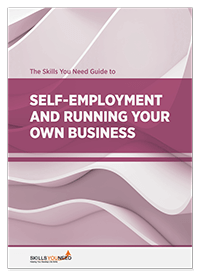Finding A Job:
Using Platforms and Marketplaces
See also: Finding a Job
There have been several major changes in recruitment and staffing over the last ten years or so, but perhaps the biggest has been the rise in marketplaces or platforms. These are sites that enable employers to recruit, and potential employees to find work—but not in the traditional style.
Unlike recruitment agencies or head-hunters, these sites do not work with recruiters to try for suitable candidates for a job. Instead, they act as a platform to unite people who need work with businesses or organisations who want to hire someone with suitable skills.
This page explains how best to use these sites to find work.
Introducing recruitment platforms and marketplaces
In the last ten years, there has been a huge rise in platforms and marketplaces of various different types.
It is part of a growing trend for platforms bringing together ‘buyers’ and ‘sellers’ across sectors: Amazon’s Marketplace, for example, was one of the first, along with auction site eBay.
It is therefore unsurprising that recruitment has joined the throng. There is now a wide variety of recruitment marketplaces and platforms, including both general sites and sector-specific sites. Some companies even run their own, often internal, job markets using platforms like this.
The general sites include People Per Hour, Fiverr and Upwork. These are aimed at ‘freelancers’ in general, and the work advertised ranges from writing and editing through to web and mobile development, marketing, accounting and administrative support.
Short-term or permanent?
Many freelance or recruitment platforms are focused on short-term contracts or freelance work, rather than permanent employment relationships. Both the organisations and the potential workers on there are looking for a non-employment relationship.
However, many a permanent job has begun as a two-week contract for services.
Indeed, many companies use contracting as a way to find suitable employees: only those who work well with the company as contractors are offered the opportunity to become employees. These sites can therefore be an important part of both finding work as a freelancer, and finding a permanent job if that is what you want.
One big advantage of these sites is that they usually handle all the financial aspects for you. They will send a formal invoice to clients, chase it up if unpaid, and even hold a deposit or the full payment in a secure account in case of any disputes. They will also mediate any disputes. This can be very helpful when you first start out, because it feels a lot safer than handling all your own client relationships.
Finding the right site
It can be a challenge to identify the best site for your job or skillset.
The best advice is probably to look at several, and also ask around about which ones are used in your industry. If necessary, you will simply have to register with several, and risk wasting your time, because it is very hard to tell which ones will be most useful until you start trying to use them.
Top Tip! Check the site’s payment model
Marketplaces have to make their money somewhere.
That means they either have to charge freelancers/job-seekers, or companies, or both. This affects how they operate, and who they view as their clients.
Many sites require job-seekers to pay to bid. This may sound unfair, because you are paying upfront without any guarantee of success. However, it ensures that you don’t spam the site with thousands of bids, but instead focus on the jobs you are likely to get. Some sites allow you to bid for free on a certain number of jobs per month or week, and then pay for more bids if you need or want.
Many sites also take a percentage of earnings.
Try to avoid sites that charge you simply to register or have a profile on the site, because they have no incentive to help you find work, or to ensure the quality of work on the platform.
You will almost certainly find that one or two sites are better for your chosen industry or sector, and your geographical location. However, this changes over time. Take time to check the locations of clients and contractors on potential platforms to make sure that you will fit in.
This matters because you need to be sure that you will meet the expectations of potential clients, without having a ‘race to the bottom’ on price.
Once you have chosen two or three platforms to join, it is time to maximise the benefits of those platforms.
Maximising the benefit of your chosen platform
Once you have joined a recruitment/contracting platform, take a bit of time to get to know the site.
Explore its features and look at what it offers to potential contractors or freelancers. Establish the possible routes for finding work (for example, do you always have to bid for work, or can potential clients approach you?). It is also worth checking out any suggestions for boosting your reputation on the site (for example, the site may allow users to submit articles to its blog).
Read any blog about how to get work via the site, and any tips from experienced users.
Finally, check the site’s terms and conditions, and especially its ‘dos and don’ts’. You don’t want to fall foul of any rules, especially early on, and you want to make sure that you don’t pay for anything unnecessarily.
It is also a good idea to look at the profiles of some successful contractors in your field. Have a look at the keywords they use, how they present themselves, and their prices. This will help to make sure that you present and price your services suitably.
Avoiding a price ‘race to the bottom’
In recent years, it has sometimes seemed that freelance work has become a ‘race to the bottom’ in price terms. Contractors living in areas with a very low cost of living have been able to undercut those in more expensive parts of the world.
If you are in a more expensive part of the world, you cannot afford to embark on a price war.
You probably can’t afford to work for just a few pounds an hour, so don’t try to compete. Instead, look at what the experienced freelancers in your location and sector are charging, and pitch a little below them. You will find clients at that price point if there are others on the site using those prices, and then all you have to do is make sure that the quality you provide matches your clients’ expectations.
You can also look at jobs posted on the site to see what skills they want and need, so that you can highlight the right skills in your profile.
The next step is to create your profile.
Drawing on your research on successful site users and desirable job postings, it is now time to create your own profile on the site. Make sure that you include the most important/relevant skills and experience, and make your profile attractive and informative.
Should you include a portfolio?
Many freelance/contracting sites allow you to include a portfolio of work in your profile. If this is allowed, it makes sense to do so, because it showcases your work to potential clients.
You don’t have to share your entire history of work, but including up to five carefully-selected pieces can be a helpful way to show the breadth of your experience and skills without over-burdening potential clients with information.
Finding suitable opportunities
Your final step in using a job platform is to find suitable opportunities. The methods you use will depend on the platform, but usually there are two:
You can offer a defined service for a set price. Potential clients can then approach you to buy your services; or
You can bid for jobs posted by potential clients.
Usually, you will want to do a mix of these: set up several ‘defined service’ offers for people to buy, and then scan the job listings and bid for work that might suit you. When you bid, you are effectively pitching for the work. You therefore need to say why you are the best person for the work, and the price that you will charge.
There are other tips on using these sites to find freelance work in our page Finding Work as a Freelancer.
How often you will need to bid for work will depend on the projects you take on, and their duration. Some may be very short, but others may be designed to last several months. Some, as we said before, may lead to long-term relationships or even permanent employment.
Further Reading from Skills You Need
The Skills You Need Guide to Getting a Job
Develop the skills you need to get that job.
This eBook is essential reading for potential job-seekers. Not only does it cover identifying your skills but also the mechanics of applying for a job, writing a CV or resume and attending interviews.
Conclusion
Job platforms are a good way to find work, especially in certain fields, or when you are starting out in self-employment. They can lead to long-term relationships with clients, or even permanent employment. However, you need to be aware of the pricing structures and systems, and to pick your platform carefully.


